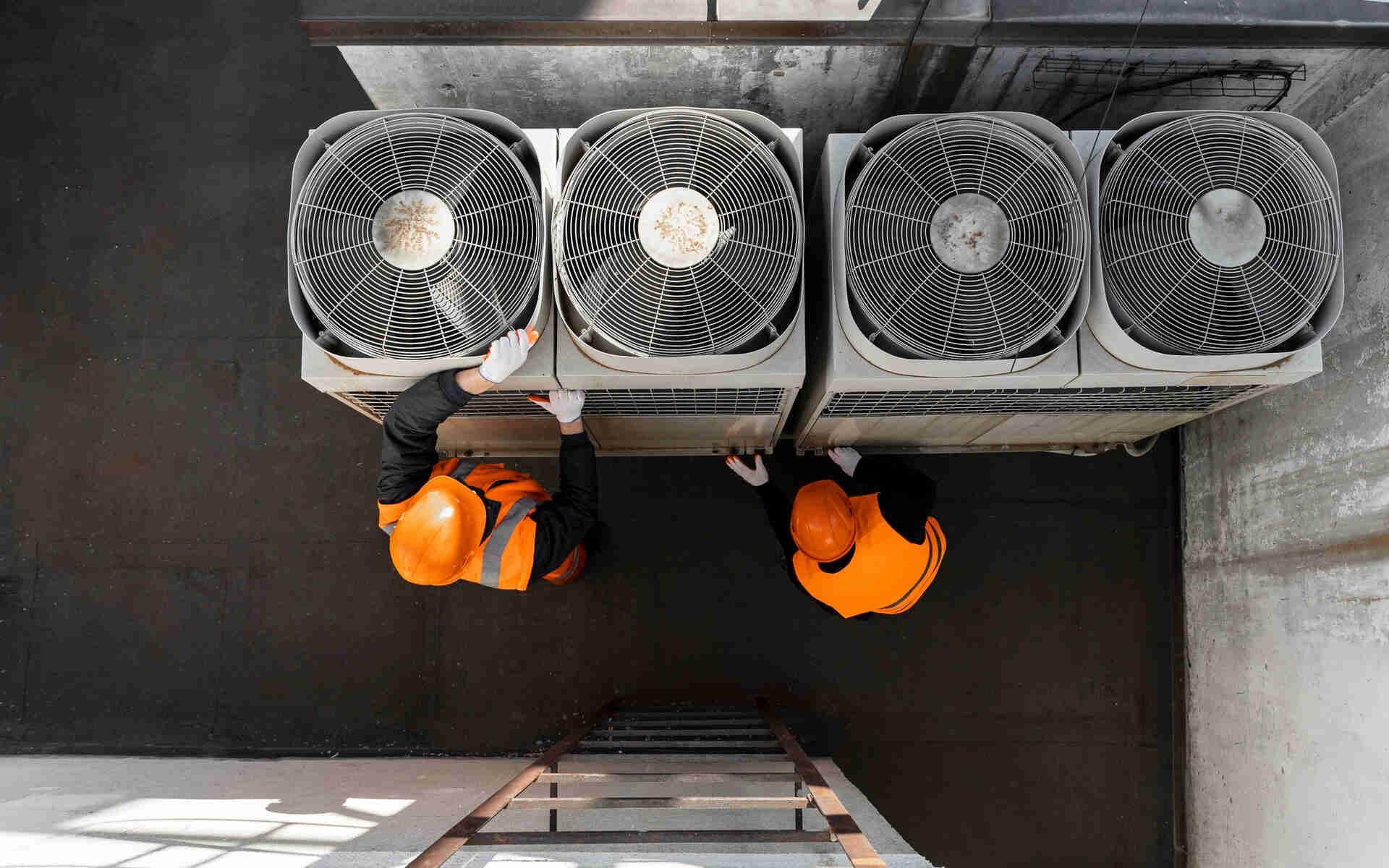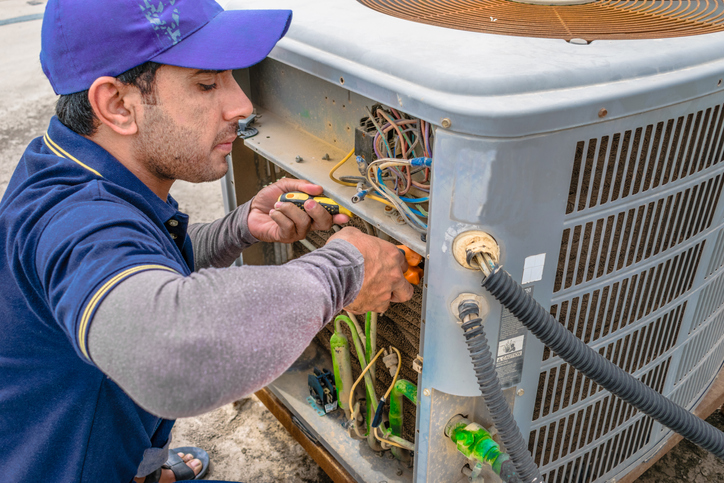Is Geothermal the Next Big Thing in HVAC?
Geothermal HVAC - key points for Contractors
5 MIN. READ
Summer 2021 was one of the hottest in recent memory, and that brought new demand for unique HVAC solutions. Geothermal HVAC isn’t a new concept, but the technology has grown by leaps and bounds since its inception. Is geothermal the next big thing in HVAC?
Making sense of geothermal HVAC
What is geothermal heating/cooling and how does it work?
First, let’s briefly outline how conventional HVAC systems work. Conventional systems cool by pushing heated air across coils filled with refrigerant that absorb the heat, cooling the air. A blower then pushes the cooler air throughout the space through ductwork. Energy to operate the process is typically provided by electricity.
Heating is typically achieved using energy produced by combusting natural gas in a burner to create heat. The burner heats a heat exchanger, and a blower pushes hot air across the heat exchanger into supply ductwork. Combustion by-products are exhausted to the outside.
Geothermal heating
Geothermal heating uses the heat in the earth below the frost line where the temperature holds at a constant 55 degrees Fahrenheit. Heat absorptive fluid is pumped into the earth in pipes and absorbs the heat. A pump pushes the heated fluid back up to a heat exchanger inside the structure and a blower pushes cool air across it into supply ductwork.
No fuels are consumed. There are no gases to be exhausted into the atmosphere, so the carbon footprint is much smaller.
Geothermal cooling
The cooling process is the reverse of the heating process. A blower pushes heated air across a cooling coil filled with refrigerant that absorbs the heat. The heated refrigerant runs from the coil to piping that runs into the earth, which absorbs the heat.
The essential difference is that conventional systems use natural gas and electricity to drive heating and cooling, while geothermal uses the thermal energy contained below the earth to heat. It then cools by depositing the heat rejected by cooling back into the earth.
The energy used for heating itself costs nothing, and tapping the source uses less electrical energy than conventional systems.
Thus, operating costs are 25-50% less than conventional systems. However, upfront costs can be significantly higher.
Other advantages
Cost
Geothermal HVAC installation costs are subject to federal, state, and utility subsidies that improve the cost-benefit equation. Currently, the current federal subsidy offers a 26% tax credit for the purchase and installation costs of the system through 2022. In 2023, the tax credit decreases to 22%.
Operating costs are low relative to conventional systems because of geothermal’s inherent efficiency. The Energy Efficiency Ratio (EER) of geothermal systems ranges from 15 to 25, while efficient conventional systems score only 9-15. Thus, geothermal HVAC is almost twice as efficient as conventional systems!
Maintenance simplicity
With only a heat pump and ground piping loops compared to conventional systems’ furnace and air conditioning systems, geothermal is much simpler and cheaper to maintain, with fewer moving parts.
Longevity
Conventional systems generally last 12-15 years, while geothermal systems last over 20 years, with the piping loop generally good for 50 years.
Quieter and comfortable operation
Conventional AC units are noisy, with their compressors and other moving parts. Lacking these, geothermal units are much quieter.
Adds to home value
Because of much higher efficiency and resulting lower costs, the home resale value will likely increase with geothermal.
Inherent limitations and challenges
Initial cost
The biggest challenge facing geothermal systems is initial cost. A new conventional furnace and AC unit run around $5,000 to $12,000 depending on size and features. A geothermal system will cost between $30,000 and $50,000.
Space constraints
Geothermal systems require outside space to bury piping. You need to make sure there is adequate open space close by.
Retrofitting systems may damage landscaping or other existing infrastructure, and may involve removing old equipment and retrofitting ductwork, so new construction is simpler and cheaper.
System sizing
It is crucial to size correctly from the start. It is difficult and costly to dig up and add on to residential geothermal systems once installed.
A typical home will require a system with 2.5-5 tons (30,000 to 60,000 BTUs) capacity. For best sizing results, consult the Air Conditioning Contractors of America (ACCA) 8 factor method derived from Manual J, the industry bible for HVAC system sizing.
Key considerations for contractors
The market for geothermal
The market for geothermal HVAC is growing at an annual rate of 12%, with technological advances helping to drive costs down. So, there is opportunity. But if you are considering getting into this business, there are several key points to keep in mind.
Understanding different systems and their costs
As covered above, there are two main components to geothermal systems:
- Heat pump
- Piping loop
Remember, installation costs, before incentives, can range from $30,000 to $50,000 depending on features (like EER) and size of the system.
Another key cost factor is whether the piping loop is horizontally or vertically oriented. Horizontal systems are less expensive than vertical systems, which require more complicated drilling.
Effects of labor shortage on prices
HVAC technicians are already in short supply. Because of the more complex technology, geothermal techs are even harder to come by. The result is upward pressure on labor costs.
Making the sale
To overcome the initial cost hurdle, be prepared to work with the customer to run a credible analysis comparing upfront investment versus cost savings to determine the payback, before and after any tax or other incentives. Work with your local utility for help in these calculations.
Be prepared to sell geothermal as a perpetual source of free heat energy with minimal environmental impact and as a value-added feature for the home at resale.
If you have the capital and risk appetite, consider offering financing to soften the investment blow to customers and create an additional revenue stream.
Training or finding subcontractors to handle the new services
Before you venture into the geothermal HVAC business, you need to thoroughly understand it. You must hire qualified in-house techs or train them, or you should find qualified substitutes.
To train yourself or your techs, reach out to the International Ground Source Heat Pump Association (IGSHPA). They provide leadership in standards for geothermal along with extensive country-wide training and accreditations.
Respected accreditations that provide instant credibility include:
- Accredited Installer
- Certified GeoExchange Designer
- Certified Geothermal Inspector
IGSHPA also offers town hall discussions to all members covering everything from residential sales best practices to design of commercial systems to financing. If you choose to outsource geothermal work, look for IGSHPA certified installers to get the expertise you need.
Establishing a supply chain to offer new solutions
Once you understand the business, find a reliable set of suppliers to provide quality equipment at the best prices. Inflationary pressures and supply chain shortages will make business more challenging for traditional or geothermal projects.
You cannot rely on manual processes to get the results you need to compete. Technology that assists in supply chain management, purchasing, and procurement enable you to concentrate on selling and installing systems.
How Raiven can help
Whether you choose to include Geothermal solutions in your offering or not, Raiven can help you receive pre-negotiated discounts of 7-25% on HVAC equipment, parts and materials from industry-leading suppliers like Carrier Enterprise, Ferguson, Graybar, and Grainger.
Raiven’s Marketplace saves your employees time and money by providing one location for them to find and purchase products quickly and easily.
Raiven's digital buying assistant automatically finds products that are available and at the lowest price from our industry-leading suppliers and provides a comprehensive set of analytical tools and reports at your disposal. For more information, contact us today!


